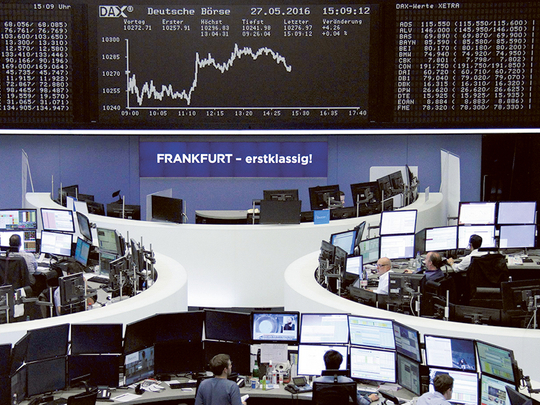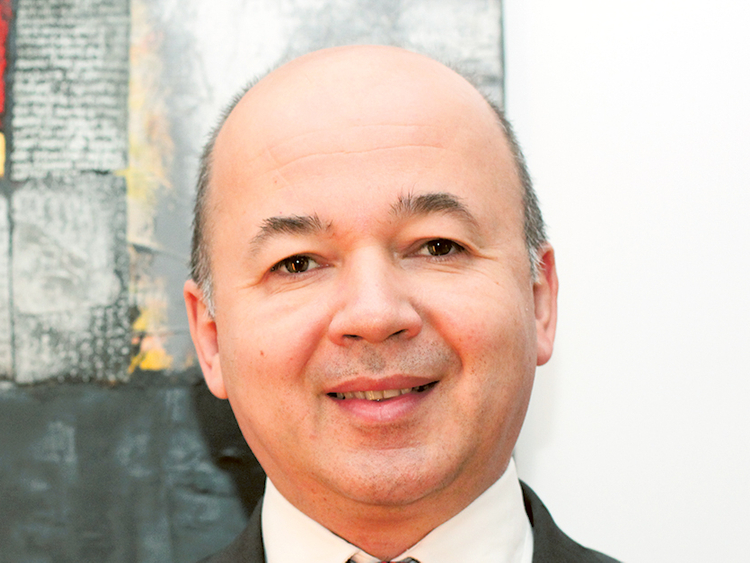
Outlook for the developed market equities in general looks bleak for the rest of the year with upward gains limited as valuations, especially of US equities appears stretched and the potential two rounds of rate hikes hurting liquidity, according to Xavier Denis, Director, Global Strategy, Societe Generale.
“While global equity markets have recovered strongly from their February lows, receding fears on US and China growth, and further easing measures by European Central Bank (ECB) and Bank of Japan (BoJ) and the recovery in oil prices, a continuation of the rally would require stronger economic data and improved earnings momentum given global equities’ expensiveness at present,” said Denis.
Over the past months, most valuation metrics have remained expensive with analysts cutting their profit estimates. The MSCI World’s price-to-sales, price-to-earnings and price-to-cash flow ratios remain at multi-year highs. In the coming quarters, US earnings recovery is forecast to be modest.
In the Eurozone, equity outlook is a tad better compared to the US as improved economic prospects, an ultra-accommodative monetary policy and a pickup in credit growth should all help profits recover.
Following deep corrections over the past five years, Denis said, emerging market valuations look attractive. “We are now more positive on emerging markets than developed ones. While the growth outlook remains weak and structural adjustments are still needed in most countries, emerging markets (EM) should benefit from a low-rate environment worldwide. We remain selective and still favour Asia over Latin America and EMEA,” he said.
The recovery in commodity prices, receding fears about China’s hard landing and a weaker US dollar are supporting emerging markets.
Fixed income
A hawkish Fed combined with a reluctant ECB on further rate cuts makes government bonds selectively attractive. But with nearly one third of Eurozone government bonds still offering negative yield, core country bonds are off the limits. But the ECB’s quantitative easing and upcoming corporate bond buying programme offer better yields of bonds of peripheral countries such as Italy to Spain and Portugal and corporate papers.
Denis expects the US Fed to be less accommodative than markets anticipate and expects two rate hikes this year. The US job market remains buoyant. Although wage pressure has remained contained, further improvement in labour conditions will exert upside pressure. Inflation is trending higher and the core price index is already above the 2 per cent target.
As oil prices stabilise, the base effect is expected to start kicking in, reducing downward pressure on inflation. “We believe that US Treasury Inflation-Protected Securities (TIPS) will outperform Treasury bonds, as actual inflation will exceed the break even rate,” he said.
In the corporate segment non-financial companies will face worsening fundamentals, the financial sector, mainly are expected to prove more resilient.
Gold
Factors such as low (or negative) real interest rates, expensive sovereign bonds, demand from central banks and from emerging countries are expected to support gold, while on the supply side, mining production is expected to fall.
“One way of benefiting from such a constructive environment would be to invest in gold mining stocks, which are highly correlated to gold prices. Indeed, mining companies’ fundamentals have improved considerably over the past 2-3 years. The sector has managed to restructure its activities and cut costs. Despite the recent rally, the global gold mining sector seems attractively valued,” said Denis.
Dollar and oil
While dollar rally is constrained by overvaluation, the recent recovery in oil is expected to be capped by supply demand factors
“We believe the dollar bull-run has come to an end. The EUR/USD exchange rate should consolidate as the dollar is already overvalued, monetary policy divergence is priced in, and the single currency is supported by a large current surplus. We expect EUR/USD to trade around 1.10 in six months with possible weakness in the interim,” he said.
Although the Brent has crossed $50 a barrel, the highest in a year, Denis believes that the trend in oil prices is no longer upwards only and will be determined by supply and demand forces. Supply disruptions have recently spread to a large range of countries such as Libya, Nigeria, and Canada — among others — have cut production by about 2Mb/d, underpinning the ongoing rally.
Marginal production costs have fallen from $70-80/barrel for conventional oil to around $50/barrel for shale oil. US producers have cut their production costs by around 25 per cent since December 2014, lowering their break even per well to $45-50/b on average. Unconventional oil production has grown fast, restoring the US as a key market player.
“Opec has lost its influence on market prices while Saudi Arabia has adopted a predatory pricing strategy by increasing its output. Iran’s return to the crude oil market amplifies the oversupply, which we view as the main cause for the drop in prices,” said Denis.






